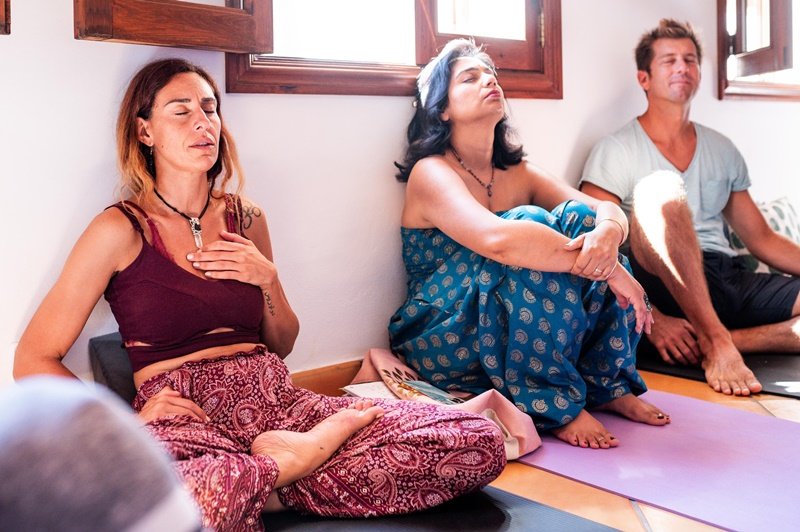An educational system as a space of deep connection with our human nature.
It is a powerful and necessary idea to reimagine the educational system as a space of deep connection with our human nature. The ideal education should not only transmit technical knowledge, but also teach us to explore and understand the emotions we carry within, to recognize our own emotional information and to live harmoniously with it. This would not only enrich us individually, but would create a more conscious and connected society.
Imagine a system that teaches students from an early age to identify what they feel: fear, joy, sadness, love, frustration, among other emotions. Instead of ignoring or suppressing them, they would be taught to embrace them as part of their being. They would learn to respect and validate their feelings, not to judge themselves for them, and to develop skills to manage them. This process not only helps on a personal level, but gives them valuable tools to make conscious decisions, taking into account how those decisions affect both their well-being and that of those around them.
In addition, a focus on emotional education would allow us to transcend the limitations of individualism. It would be possible to learn to function not only as individuals, but also as collective beings, recognizing the importance of emotions in interpersonal relationships and in the creation of empathetic communities. In this way, we could move towards a system where emotional intelligence and empathy are as valued as technical skills.
Ultimately, an education centered on the human being and his emotions could redefine what “success” and “purpose” mean. We would no longer be training just professionals, but also full people, capable of making decisions aligned with their true self and with a sense of responsibility towards the common good. This change in the educational system would not only be revolutionary, but essential to build a more humane, supportive and conscious future.

Emotions are not just felt;
They can also manifest physically in the body, a phenomenon supported by psychosomatics, which studies how our emotional experiences are reflected in physical symptoms and ailments. When we are under stress, we feel tightness in the chest; when we are sad, our throat closes, and when we are anxious, our stomach reacts. This connection between mind and body is key to achieving comprehensive balance and lasting well-being.
How emotions affect the body Each emotion causes chemical and hormonal reactions that can accumulate in the body if we do not manage them properly. For example, continuous stress can cause muscle tension, insomnia, and even cardiovascular problems. Accumulated anger can cause digestive problems, and unexpressed sadness can cause pain in the chest area. By learning to recognize emotions and their impact on the body, we can make more conscious decisions to maintain our well-being.
Techniques to harmonize mind and body To balance and heal from this perspective, there are practices that help release and transform the accumulated energy of our emotions:
1. Therapeutic massages:
Massages can relieve accumulated tension, improve circulation and release energy blockages. They can also be a way to reconnect with oneself and become aware of the areas of our body that need attention.
2. Yoga and specific postures:
Yoga works on a physical, mental and energetic level, helping to release emotions that may be trapped in the body. Specific postures, such as those that open the chest or solar plexus, can help you release repressed feelings of sadness, anger or anxiety.

3. Meditation:
Meditation allows us to observe our thoughts and emotions from a more neutral perspective, promoting detachment and self-knowledge. Through meditation, we can learn to listen to and understand our body’s signals without judging, thus facilitating the release of pent-up emotions.

4. Energy techniques such as LNT or quantum healing therapy work on different levels of the human being:
Physical, mental, emotional and spiritual. These practices help balance internal energy, promoting greater mental clarity and helping to identify energy blockages that are often rooted in past experiences, limiting beliefs or emotional patterns.
Additionally, you can emphasize how these techniques can activate the self-healing power that we all have, allowing the body to recover its natural state of well-being and harmony. By unblocking and aligning our energy centers, it is easier for energy to flow in a balanced way, which in turn promotes a greater connection with ourselves and our life purpose.
Integration and coherence
Practicing these techniques helps us live in coherence, where mind, body and spirit are aligned. By attending to and releasing repressed emotions, we not only improve our physical health, but also our mental clarity and emotional well-being. This integration allows us to live more fully, make better decisions and respond to life’s challenges in a balanced and healthy way.
5. Conscious movement and dance: liberation through the body

Conscious movement and dance are practices that can help release trapped emotions, break limiting mental patterns, and experience a deep connection with the “authentic self.” Through free and spontaneous movement, conscious dance allows us to explore and express what we feel without words, from joy to sadness, anger to peace. This process is a powerful way to let go of repressed emotions and connect with a sense of inner freedom.
Psychosomatic effect and emotional release
When we move consciously, we are giving our body permission to express itself without restrictions. This activates the nervous system and allows emotional and physical blockages to be unblocked. With each movement, the body releases accumulated tensions, which reduces symptoms of stress, anxiety or sadness that can manifest physically in headaches, muscle tension, digestive problems or chronic fatigue. In addition, moving consciously allows the body to break out of limiting patterns of behavior, creating space for the subconscious to let go of old beliefs.
The magic of endorphins and personal evolution
Conscious movement generates endorphins, well-being hormones that contribute to a positive emotional state and fulfillment. These hormones help us reduce the perception of physical and emotional pain, allowing us to enjoy a feeling of well-being. Through the continued practice of conscious dance or free movement, deeper levels of self-knowledge can be accessed, where we become aware of the patterns we want to change and the limiting beliefs we are ready to break.
Living in the “authentic being”

Conscious movement and dance invite us to experience what it means to live in the “authentic self.” In the flow of dance and movement, we let go of expectations and conditioning, and allow our genuine self to express itself without restrictions. This experience can be a way to connect with our true essence, recognizing our vulnerability, our power, and our joy.
Integrating these practices is a way to nourish body, mind and spirit, opening ourselves to a balanced, conscious and authentic life.




